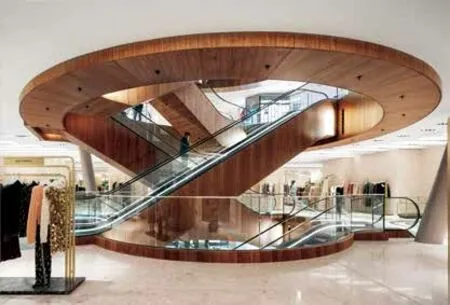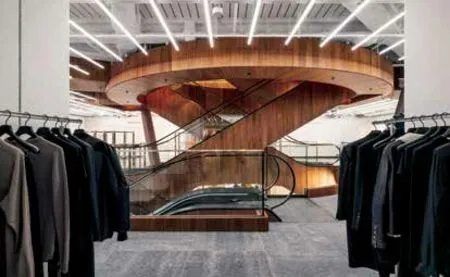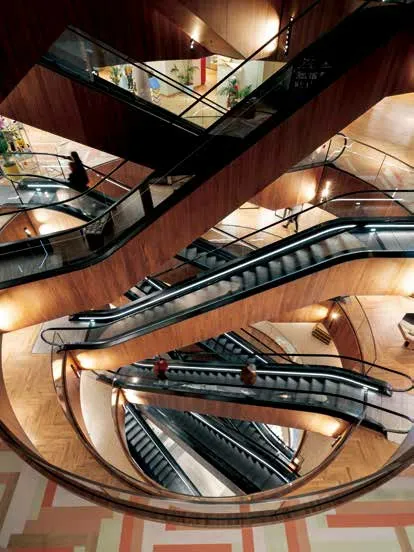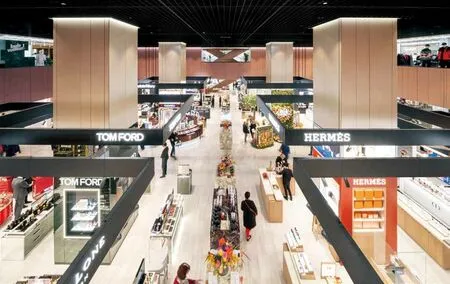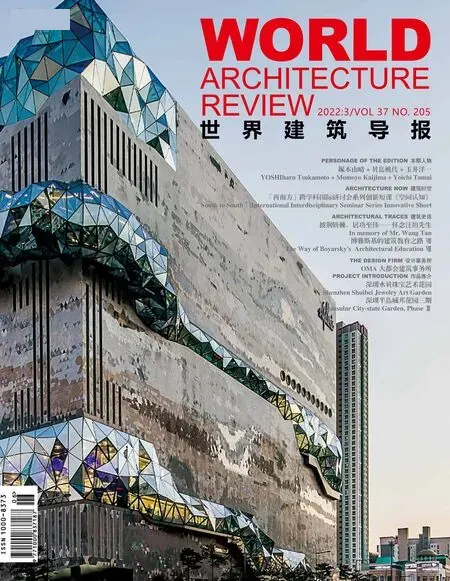柏林西百货店 德国柏林
业主单位:KaDeWe 集团
项目概况:百货商场翻新改造
主管合伙人:埃伦·范·伦,雷姆·库哈斯
项目管理:SMV Bauprojektsteuerung Ingenieursgesellschaft mbH
机械、电气、管道工程:IBT Ingenieurbüro Trache
当地建筑师:Architekturbüro Udo Landgraf,Heine Architekten Partnerschaft mbB,AUKETT+HEESE GmbH
照明:Sekles Planungsbuero
自动扶梯:HUNDT CONSULT GmbH,
Geyssel Fahrtreppen GmbH
摄影:Marco Cappelletti
Client:KaDeWe Group
Program:Renovation department store
Partners:Ellen van Loon,Rem Koolhaas
Management:SMV Bauprojektsteuerung Ingenieursgesellschaft mbH
Structural Engineer:IBK Ing.-Büro für Tragwerksplanung
Mechanical,Electrical and Plumbing Engineers:IBT Ingenieurbüro Trache
Local Architects:Architekturbüro Udo Landgraf,Heine Architekten Partnerschaft mbB,AUKETT+HEESE GmbH
Lighting:Sekles Planungsbuero
Escalators:HUNDT CONSULT GmbH,Geyssel Fahrtreppen GmbH
Photography:Marco Cappelletti,Courtesy of OMA
西百货店是一座传统的欧洲百货商场,与巴黎的老佛爷(Galeries Lafayette)、伦敦的塞尔福里奇(Selfridges)以及米兰的文艺复兴百货(La Rinascente)齐名。从历史上来看,这些百货商店对早期现代零售业的发展起到了一定的推动作用,它们促进了精致工艺打造、社交以及服务尝试方面的发展。
自1907年开业以来,西百货店便成为引领商品推陈出新的前沿阵地,设立了一系列新的消费者服务标准。作为欧洲大陆最大的百货商店,西百货店理所应当地成为了城市的代言人。西百货店几乎如同一座小型城市,它拥有三维的道路和广场系统,在其巨大的外围中囊括了多个社区以及各种活动和景观,提供了丰富的商业、社交和文化交流的机会。它的变革真实反映了德国的现代历史的进程:从20世纪早期的诞生,经历了第二次世界大战的毁灭性破坏,以及20世纪50年代以来的重生,它已经成为一个国家战后重建及经济复苏的典型标志!
20世纪末,加速的经济全球化以及数字革命使得西百货店变成了一个过时的商业模型。它被另一种零售模型取代,后者重新定义了百货商场、顾客、建筑空间以及城市环境之间的关系,更加适应时代的发展。
我们针对西百货店转型的计划是策略性的。
与其将现有建筑视为一体,不如分解为四部分,各有千秋,独具建筑和商业价值,迎合不同的顾客:古典、创新、现代、大众。四栋百货大楼共享同一穹顶,一体细分,易见易懂——就好像不同的城市碎片拼在一起整合成一个完整的城市。
每栋百货大楼有不同的入口,围绕中央空间,既可以做中庭,又可以提供垂直循环。每个中心区域不仅仅是设计,而是经过了一系列策划,精心改善而成,打造四个不同的体验空间,每栋百货大楼都有四种效果不错的组织结构模型。大楼各层,大小形态迥异,各不相同,独具特色,悬空设计,穿过整个商业区变幻不定。
每个商业层采用交叉组织系统,呈现一分为四的结构。每个空间使用井井有条,有公共循环区,设有不同大楼之间的通行,明晰条带和策划区域之间的联系,同时还可以举办计划外的项目。大楼可以作为基础设施提供多种条件和满足各种用途。
Kaufhaus des Westens (KaDeWe) belongs to a consolidated tradition of historical European urban department stores such as Galeries Lafayette in Paris,Selfridges in London and La Rinascente in Milan.Historically,these department stores have been some of the pillars of early modern retail,acting as incubators for sophisticated crafts,social exchange and experimentation in services.
Since its opening in 1907,the KaDeWe has always been at the forefront of product selection,while also setting new standards for customer services.Its unique size– the biggest department store in continental Europe– makes it akin to a city:a three-dimensional network of paths,squares,neighborhoods,activities and views unfolding through its large extensions,providing opportunities for commercial,social and cultural encounters.Its evolution reflects Germany’s modern history:from its origins in the early 20th century,through WWII destructions and the subsequent rebirth in the 1950s when it became a symbol of the country’s post war reconstruction and economic success.
Late 20th century modifications,accelerating global economic shifts and the digital revolution have turned the KaDeWe’s former set up into an obsolete model.An alternative to the established retail model– a model that redefines the relationship between the department store,its patrons and its physical and urban environments– is timely.
Our proposal for the transformation of KaDeWe is tactical.
Rather than treating the existing building as a singular mass,the project breaks it into four quadrants,each one with different architectural and commercial qualities,targeted at different audiences:classic,experimental,young,generic.The four department stores under one single roof fragment the original mass into smaller,easily accessible and navigable components– similar to distinct urban sectors embedded into a unifying city fabric.
Each quadrant addresses a different street entrance and is organized around its core void,which acts both as a central atrium and a primary vertical circulation space.Through a process closer to curating than designing,each void is developed specifically,resulting in four distinct spatial experiences and four efficient models of organization within a single department store.Throughout the levels of the building,the voids transform in size and extension,avoiding repetition and making every floor unique,disappearing on the ground floor and morphing through the commercial areas.
A cross-shaped organizational system reinforces the presence of the quadrants on each commercial floor.It regulates the use of the spaces,the general circulation,the transition between one quadrant and the other and the relationship between brands and curated spaces,while at the same time allowing the injection of unexpected programs.The building operates as infrastructure allowing for multiple conditions and uses.
